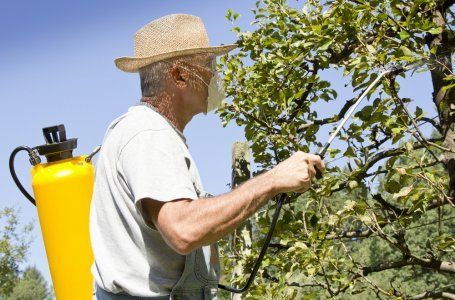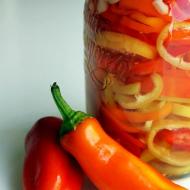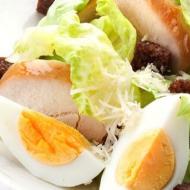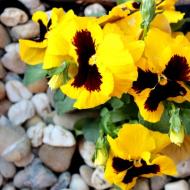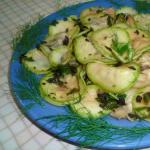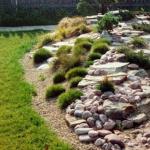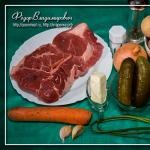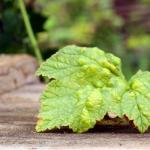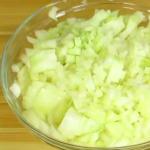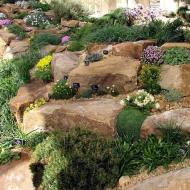
Bordeaux mixture - instructions for the preparation and use of fungicide
Many summer residents have heard such a drug as Bordeaux liquid. The use of fungicides in horticulture began with her. We tell you what Bordeaux liquid is, how to prepare it and use it correctly in the garden and vegetable garden.
Known to many summer residents, Bordeaux liquid is the first fungicide in the world, still actively used to protect fruit and berry crops from fungal diseases. The mixture was invented in the 2nd half of the 19th century. French botanist P. Milliard, who lived in Bordeaux.
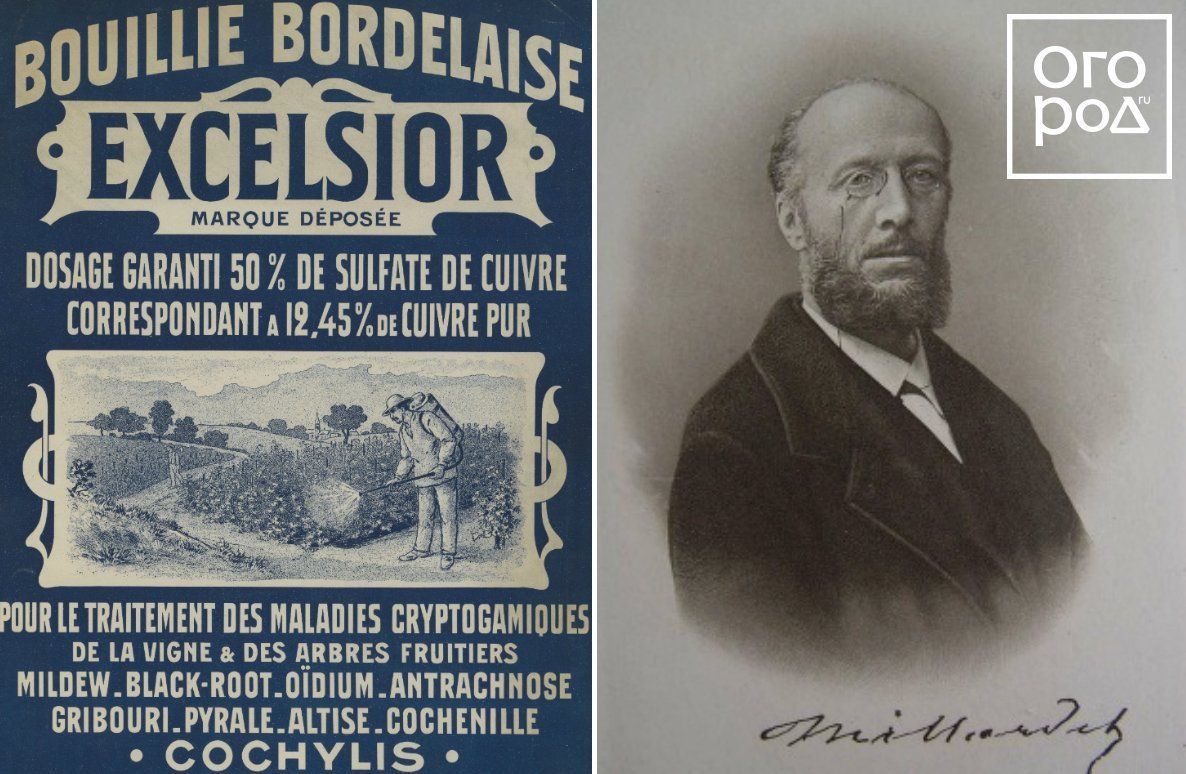
Nowadays, Bordeaux liquid is used to combat common plant diseases, such as:
- rust, scab, fruit rot, powdery mildew (in fruit and berry crops);
- macrosporiosis, late blight (in tomatoes, potatoes);
- septoria, peronosporosis, anthracnose (in cucumbers);
- mildew (in grapes);
- spotting (in raspberries, strawberries), etc.
The composition of the Bordeaux mixture
In fact, Bordeaux liquid is a solution of copper sulfate in milk of lime (slaked lime). Copper sulfate (copper sulfate) has a disinfecting effect, and in combination with calcium hydroxide (lime water) forms compounds of copper sulfate, which can effectively neutralize many harmful microorganisms.
How to prepare Bordeaux mixture
Bordeaux liquid, the preparation of which is not particularly difficult, although less toxic than blue vitriol, still take care of your safety when starting to work with the mixture:
- carry out all actions in protective clothing, as well as gloves, goggles, a respirator;
- the containers in which the solution was mixed should not be used for other needs in the future;
- dispose of the remaining solution by burying it in the ground outside the territory of the garden.
It is necessary to prepare the drug directly on the day of use. If gardening is carried over to the next day, add 5-10 g of sugar to it to preserve the fungicide.
So, 1% Bordeaux mixture - step by step preparation of the solution:
Step 1st. Prepare 2 non-metallic containers (glass, enamel or earthenware will do) with a volume of at least 10 liters.
Step 2. Dissolve 100 g of copper sulfate in 1-1.5 liters of hot water. Then gradually pour in 4 liters of cold water.
Step 3. In the second container, extinguish 100-150 g of quicklime, pour 1-1.5 liters of hot water, then also gradually pour in 4 liters of cold water.
Step 4 Mix each solution thoroughly.
Step 5 Pour the copper sulphate solution in a thin stream into the container with the lime solution (but not vice versa!) and mix gently.
You should have a bright blue liquid.
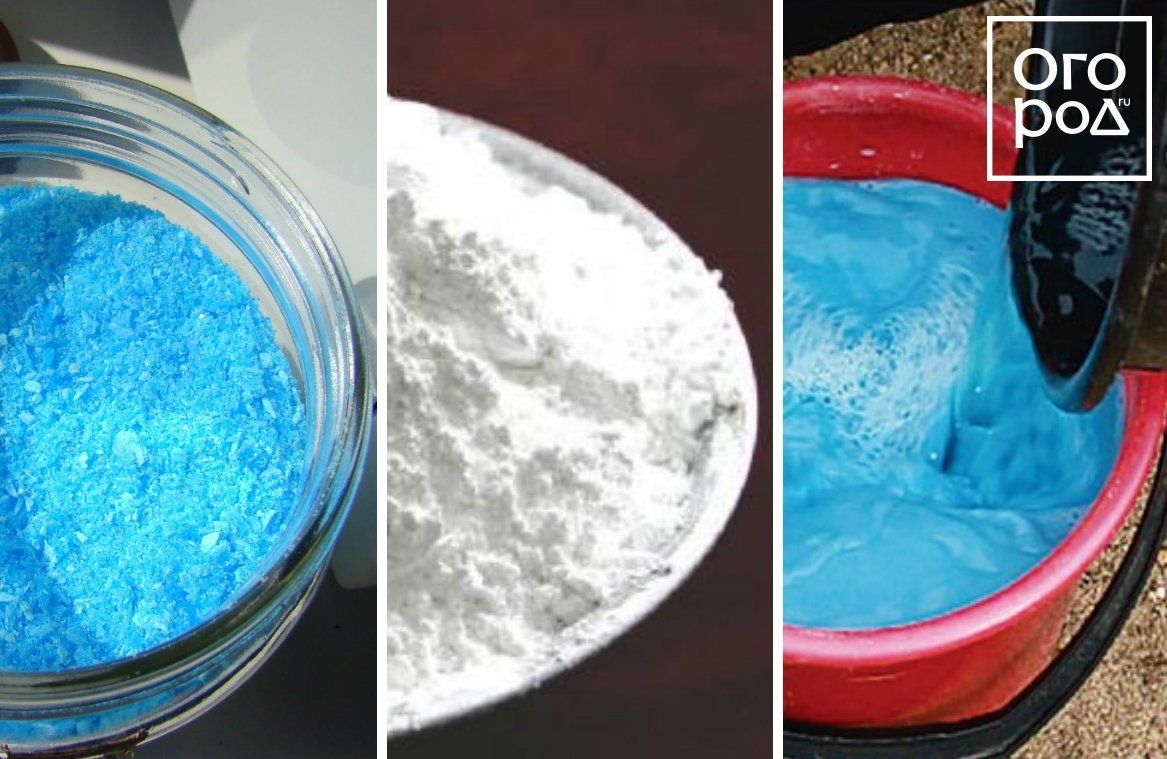
Check if there is too much vitriol in it. To do this, lower a stainless iron object there (for example, a nail) and look carefully: if copper deposits appear on the metal, then you need to add a little more lime solution.
To prepare a 3% solution of Bordeaux liquid, use 300 g of copper sulfate and 450 g of lime.
Why do we need a Bordeaux mixture and how to breed it, we figured out, now let's get down to the question of how to properly apply this drug in your suburban area.
Bordeaux liquid: instructions for use
Bordeaux mixture in the spring is effective for prophylactic ("blue") spraying: during the period of swelling or the beginning of bud break, plants are treated with a 3% solution of Bordeaux mixture. During the active growing season (when the plants already have leaves), a weaker, 1% solution of the fungicide is used.
Bordeaux liquid must not be mixed with other preparations, nor used simultaneously with other fungicides.
In autumn, the Bordeaux mixture is used in a more concentrated form (3%) than in early spring processing, since the foliage has fallen off, and you can not be afraid of burns. Autumn spraying will protect pome (pear, quince, apple) and stone fruit (cherry, apricot, plum) trees from fungal diseases.
Bordeaux liquid for cucumbers
Just like tomatoes, cucumbers are sprayed with 1% Bordeaux liquid (1.5-2 liters per 10 sq.m). The first preventive treatment is carried out at the stage of 2-3 true leaves, then repeated 2-3 times with an interval of 10-12 days.
The last spraying with Bordeaux liquid should be carried out no later than 20-25 days before harvesting.
Bordeaux liquid for potatoes
The first treatment is carried out before planting potatoes: the tubers are sprayed with 1% Bordeaux liquid 1-1.5 hours before planting. Then, when the potato bushes reach a height of 15-20 cm, spraying is repeated at the rate of 0.5-1 l of the mixture per 10 sq.m. The treatment is repeated after 12-15 days.
Bordeaux liquid for grapes
In the "green cone" phase (the bud has not yet blossomed, the green tip is only visible), the vines are sprayed with 3% Bordeaux liquid. During the growing season, a weaker, 1% solution of the drug is used.
It is necessary to spray the leaves of plants both from the outside and from the inside.
Bordeaux liquid for currants
Currant bushes (also gooseberries, raspberries) are treated with Bordeaux liquid to prevent spotting. The first spraying is carried out in early spring, using a 3% solution, for the next 2-3 treatments, a 1% solution of the drug is prepared.
Bordeaux liquid for tomatoes/tomatoes
If tomato seedlings show signs of disease (gray, brown or black spots on the leaves), treat the seedlings with 1% Bordeaux liquid using a spray bottle.
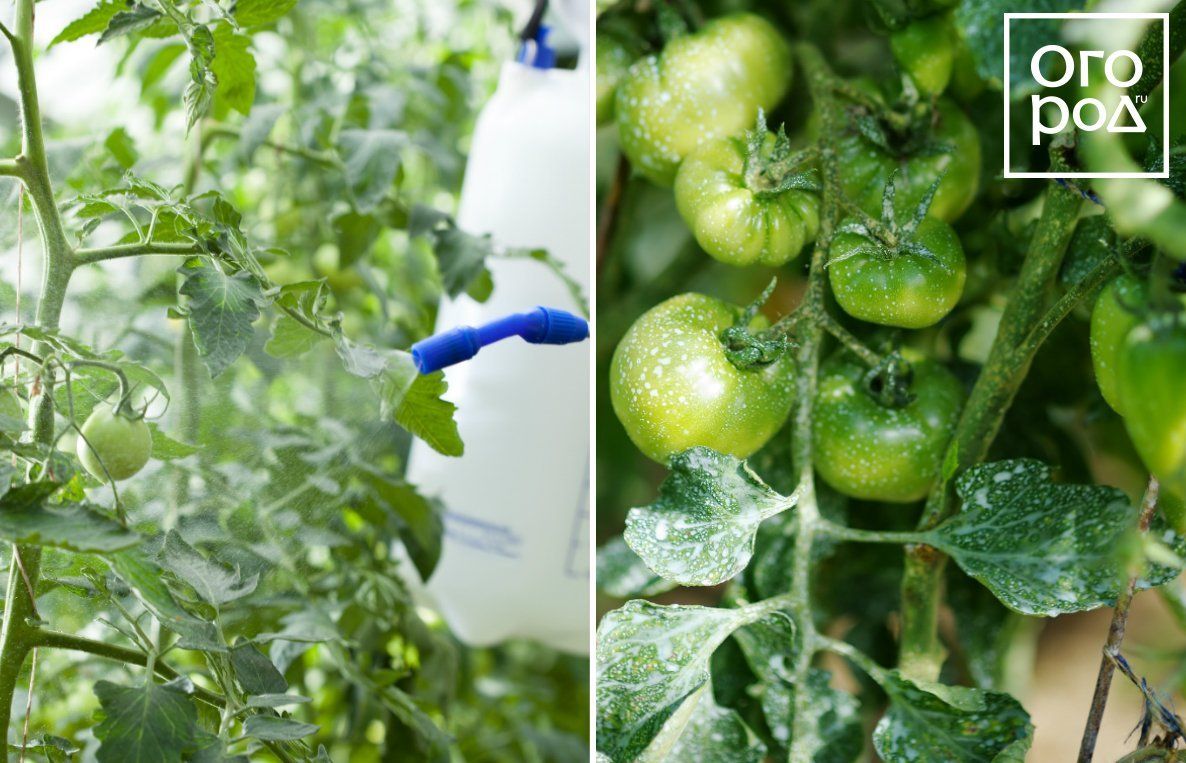
For the prevention of late blight and other diseases, spraying tomatoes with Bordeaux liquid is carried out from the end of June - the beginning of July (or 2 weeks after planting) at the rate of 1.5-2 liters of solution per 10 sq.m. In total, the plants are sprayed 3-4 times with an interval of 10-14 days.
Bordeaux liquid for strawberries
After the snow melts, garden strawberries must be treated with a 3% solution of Bordeaux mixture (0.5-1 l per 10 sq.m). Then, in the stage of leaf growth, spraying is repeated, reducing the concentration to 1%. The following procedures are carried out at the beginning of the appearance of buds and after harvesting (in these cases, a 1% solution is also used).
Bordeaux liquid for trees
In the spring, before bud break, the trees are sprayed with 3% Bordeaux liquid (10-15 liters per adult and 2-3 liters per young tree). Then, in the "green cone" phase, the treatment is repeated with a 1% solution of the drug, the next spraying is carried out after the flowering of the trees. Further treatments are done at intervals of 10-15 days, and their number should not exceed 6 sprays per season.
As an alternative to the Bordeaux mixture, you can use preparations of similar action, which also include copper oxychloride (Polyhom, Oxyhom, etc.). Such funds are able to treat "from the inside", penetrating deeply into the tissues of plants. In addition, they can be mixed with other substances.
